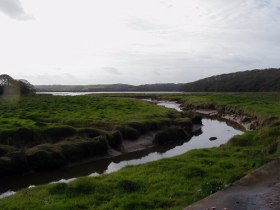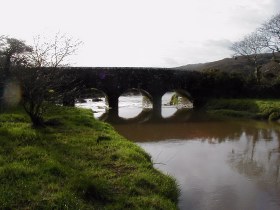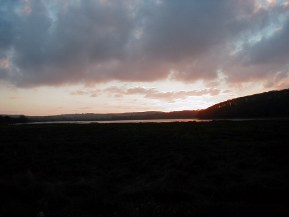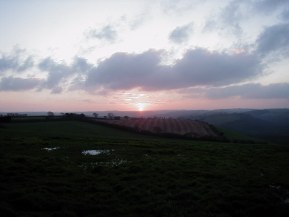| CLASSIFICATION SSSI AONB - Area of Outstanding Natural Beauty County Wildlife Site Grade 1 NCR site Candidate SAC |
  |
TYPE OF HABITAT
Saltmarsh and mudflats covering 41 hectares. This nature reserve is part of a much larger Site of Special Scientific Interest.
ACCESS
Grid Ref. Trelonk section SW 891 404 / Ardevora section SW 881 406
Access to this nature reserve is restricted; please contact the Trust before visiting.
The Trelonk part of the reserve may be seen from lanes around Ruan Lanihorne. The Ardevora section is only accessible by boat. Visitors are requested to consider the wildlife by keeping to the footpath - the exposed mudflats are potentially dangerous. The sensitive nature of the site and species that use it means that dogs are not allowed.
GENERAL DESCRIPTION
The Fal-Ruan Estuary is an extensive wetland at the margins of the land and the sea and is of great national wildlife conservation importance. The total area of this Site of Special Scientific Interest is 263 hectares, of which the Trust manages 41 hectares.
The attractive creeks and surrounding undulating topography were formed at the end of the last Ice Age (ten thousand years ago). Melting glaciers caused the sea level to rise and the valleys were flooded to create the creeks and inlets present today. The mixing of fresh water with salt water produces a mosaic of habitats including the extensive tidal mudflats and saltmarsh which have developed in the sheltered creeks, while along the margins there is dense scrub and woodland.
The area of land managed by the Cornwall Wildlife Trust is leased from the National Trust and partly funded through English Nature's Reserves Enhancement Scheme. The Cecil Stevens Memorial Hide was erected with the support of the Cornwall Wildlife Trust, the Cornwall Bird Watching and Preservation Society and the Royal Society for the Protection of Birds.


SPECIES OF PARTICULAR INTEREST
The mudflats are an important part of the reserve and are mostly composed of white china clay waste brought down by the river from the spoil heaps near St Austell. Invertebrate animals, notably molluscs, crustaceans and worms, live in the mud and are a source of much of the richness of the estuarine ecosystem. Fish and many of the important waterfowl that use the estuary feed on these animals.
The Fal-Ruan Estuary is of national importance for the numbers of black-tailed godwit that visit from July to January. Shelduck nest in burrows near to the saltmarsh and on adjacent farmland but forage on the mudflats for molluscs and other invertebrates. Other passage or wintering wading birds which use the estuary at times for feeding and roosting include curlew, dunlin, golden plover and redshank. The estuary is also important for ducks such as wigeon, teal and mallard.
Saltmarsh which has formed at the heads of the sheltered creeks is dominated by plants tolerant of the saline conditions. Common saltmarsh-grass and thrift are abundant. Other species present are glasswort, sea beet, sea lavender and wild celery.
